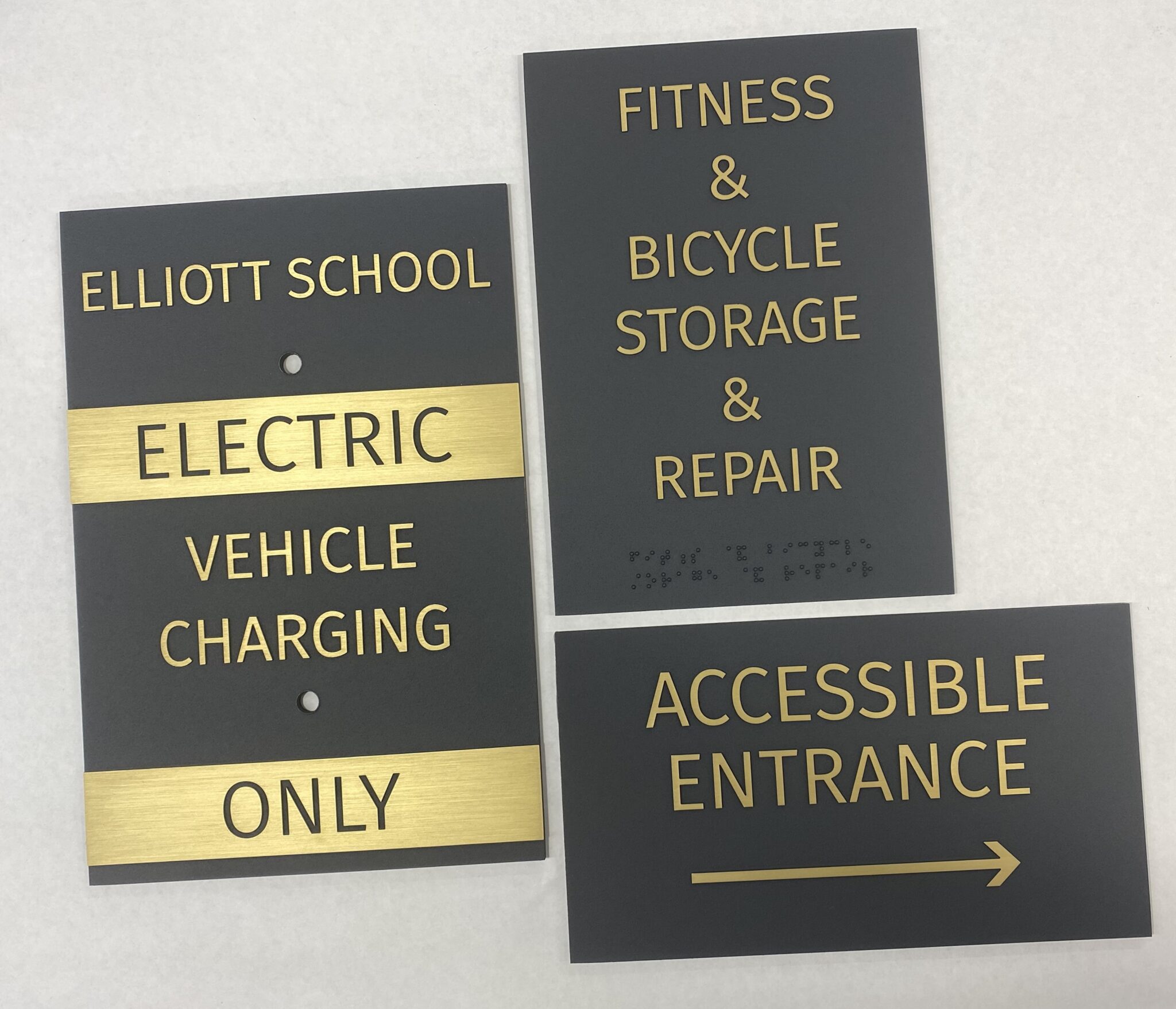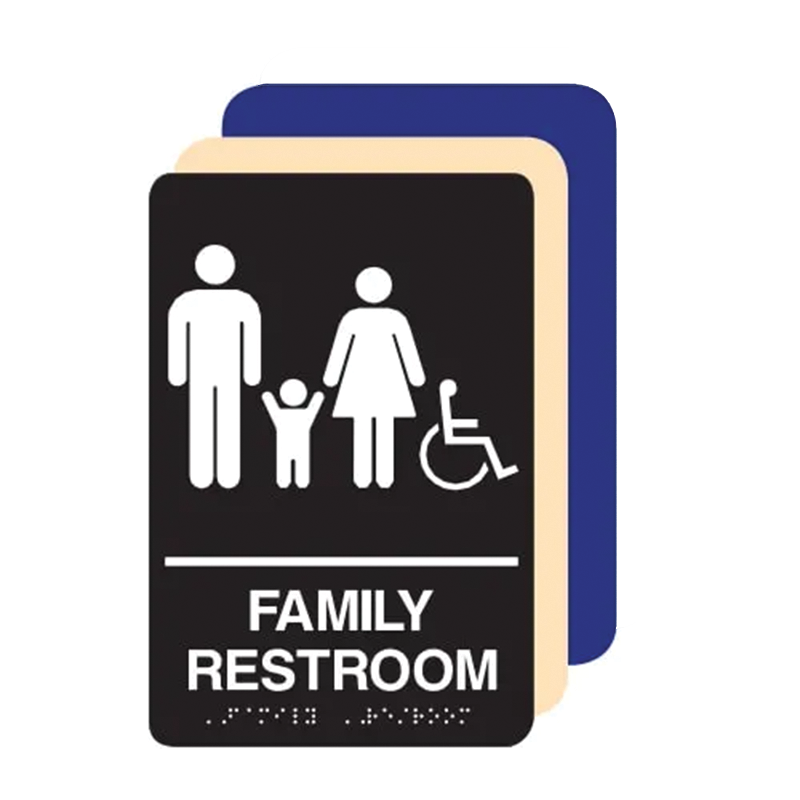ADA Signs: Vital Tools for Inclusive Atmospheres
ADA Signs: Vital Tools for Inclusive Atmospheres
Blog Article
ADA Signage: Making Certain Availability and Conformity in Public Spaces
ADA signage plays a vital duty in assuring access and compliance within public spaces, substantially adding to a comprehensive setting for people with handicaps. As we discover the nuances of ADA signage, from tactile functions to develop ins and outs, it's vital to take into consideration just how these elements integrate to promote the civil liberties of all customers.
Relevance of ADA Signs
In modern-day culture, the value of ADA signs prolongs beyond mere compliance with lawful requireds to embody a dedication to inclusivity and availability for all individuals. These signs are vital in producing environments where individuals with handicaps can browse public areas with the exact same convenience and self-reliance as those without impairments. By offering clear and standardized info, ADA signage guarantees that everyone can access centers, services, and information without obstacles.
The relevance of ADA signage lies in its capacity to improve the lifestyle for individuals with specials needs by advertising equal access. It removes the challenges that could otherwise hinder their capacity to take part fully in area life. These indications offer as visible indications of a company's dedication to variety and equality, mirroring wider societal worths that champion the civil liberties and dignity of all individuals.
Moreover, ADA signage plays a critical function in public safety and security. By directing people to leaves, washrooms, and various other necessary facilities, it makes sure that all individuals, no matter physical capability, can leave securely during emergency situations. In summary, ADA signage is not simply a governing requirement however an effective device for fostering a fair and inclusive society.
Secret Components of Compliance

Placement is vital; signs should be set up in places that are quickly visible and reachable. Typically, signage should be mounted in between 48 and 60 inches from the ground to make certain access for both standing and mobility device customers. Responsive aspects, such as Braille, are necessary for people with visual impairments, providing essential details in a non-visual format.
High-contrast colors in between the message and background are necessary to boost readability for people with low vision. The ADA mandates particular contrast proportions to make sure clearness. Additionally, personality dimension is an essential consideration, with minimal elevation requirements determined by the checking out distance to make certain readability from various angles.
Style Considerations for Ease Of Access
Creating easily accessible signs needs a thorough approach to guarantee it meets the needs of all customers, particularly those with disabilities. This entails thinking about numerous style components that improve readability and use. Secret variables include the selection of font style, shade contrast, and responsive functions. Typefaces ought to be sans-serif, with clear and simple letterforms, to promote simple analysis. The size of the message is equally essential, with ADA guidelines advising a minimum height based upon seeing range to ensure clarity.
Contrasting colors in between text and history are necessary for exposure, specifically for people with aesthetic impairments. Furthermore, tactile components, such as Braille and increased characters, are crucial for people who are blind or have low vision.
Furthermore, the placement of signs plays a substantial function in availability. Indications need to be installed in locations that are easily obtainable and unhampered. Making certain that signs is installed at proper elevations and angles makes it possible for all users, consisting of those utilizing wheelchairs, to interact with them properly.
Typical Mistakes to Stay Clear Of

One more prevalent mistake is the incorrect positioning of signage. ADA standards specify exact height and area requirements to make certain that indications find this are reachable and conveniently visible by all people, consisting of those utilizing mobility devices. Neglecting these standards not only obstructs accessibility however also runs the risk of non-compliance with lawful requirements.
In addition, inadequate comparison between text and history is a constant oversight. Sufficient comparison is important for readability, particularly for people with reduced vision. Designers occasionally choose colors that are aesthetically attractive but lack the required comparison, providing the text challenging to determine.
Last but not least, some designers fail to integrate responsive aspects, such as Braille, which are essential for individuals that are blind. Leaving out these attributes not just results in non-compliance with ADA laws yet additionally restricts access for a section of the populace that counts on responsive details.
Future Trends in Signs
Improvements in technology and increasing awareness of inclusivity are shaping the future patterns in signage style. As society becomes much more mindful of diverse needs, the combination of wise innovations into signage is getting traction. Digital signage, for instance, is evolving to include real-time updates and interactive features, which can be important in providing vibrant details in public rooms. These indications commonly integrate touch screens or gesture-based controls, enabling customers to browse material tailored to their specific needs.
One more arising fad is the utilization of increased reality (AR) to enhance customer experience. AR-enabled signs can overlay digital details onto the physical environment, giving visually damaged individuals with auditory or haptic comments. ADA Signs. This technology not just boosts availability yet likewise develops an appealing experience for all customers
Sustainability is also a substantial factor affecting signs fads. Environment-friendly materials and energy-efficient illumination remedies are being prioritized to line up with international environmental goals. Additionally, advancements in materials scientific research are leading to the advancement of even more weather-resistant and durable indications.
Conclusion
ADA signage plays an important role in ensuring access and compliance within public spaces by integrating responsive components, high-contrast shades, and critical positioning. The adherence to ADA standards not just assists in secure navigating for people with handicaps but likewise symbolizes a company's commitment to variety and inclusivity. By preventing typical errors and accepting future patterns, public rooms can proceed to progress these worths, making sure that the legal rights and dignity of all individuals are respected and upheld.
ADA signage plays a view publisher site crucial role in assuring ease of access and compliance within public spaces, considerably contributing to an inclusive setting for people with impairments. As we explore the subtleties of ADA signs, from tactile features to create details, it's critical to think about exactly how these elements coalesce to support the rights of all individuals.In contemporary culture, the value of ADA signage extends past simple compliance with lawful mandates to symbolize a commitment to inclusivity and access for all people. By offering clear and standardized information, ADA index signs guarantees that everybody can access facilities, solutions, and information without obstacles.
ADA signage plays an essential function in ensuring ease of access and conformity within public areas by including responsive components, high-contrast colors, and strategic positioning. (ADA Signs)
Report this page